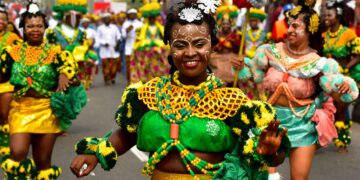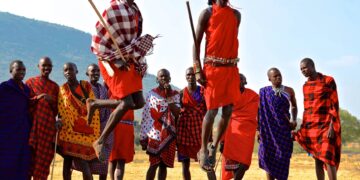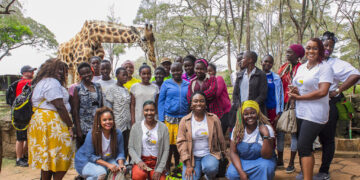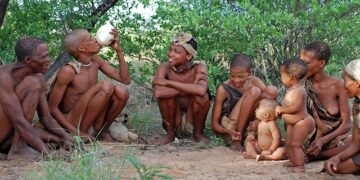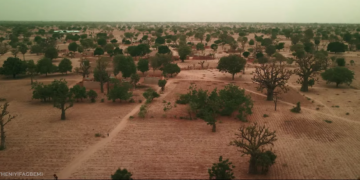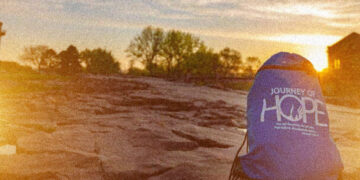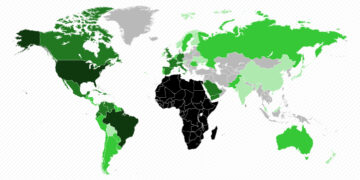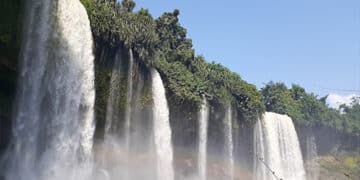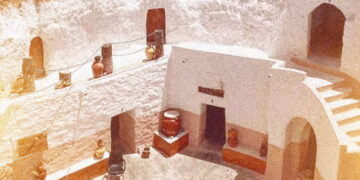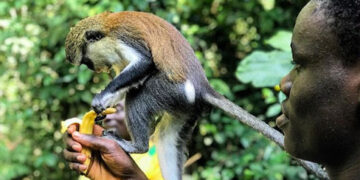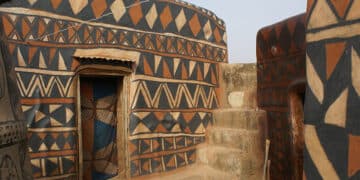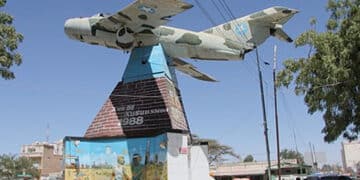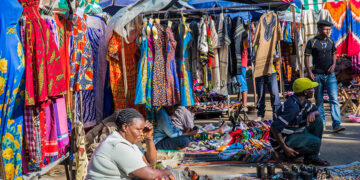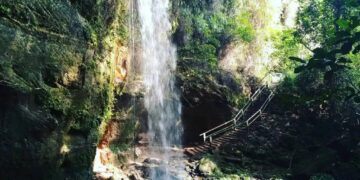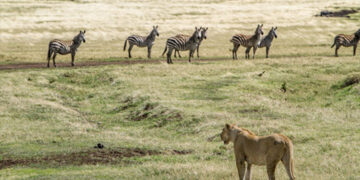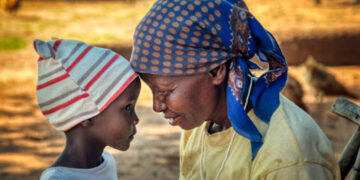When I was a kid, I watched the South African movie, “The Gods Must Be Crazy”? The hilarious documentary-style, box-office record-smasher, was my first introduction to the San people.
The tale goes like this: XI, a Kalahari Desert San, believes a Coca-Cola bottle from the sky to be a gift from the gods. This sets up a series of unfortunate, yet humorous events.
The San (Saan) people, often referred to as Bushmen (a derogatory term used by European Colonists), are one of Southern Africa’s oldest and fascinating indigenous groups. They do not have a common name in their language. Their hunter-gatherer lifestyle, language and history tie them back to the Early Stone Age. San, a term connoting ‘bush dweller(s)’ or ‘foragers’, was borne from derogation by their counterparts, the Khoe people (The Khoisan).
Join us on this time travel, as we unearth the details of the San people’s history—their battles, drifts, and compelling traditions spanning food, marriages, languages, religion, and more.
The San’s Historic Trail: Wars, Migration, and A Testimony of Resilience
Paradoxically, wars and environmental shifts have seasoned the San’s rich cultural heritage. Residing across the broad, varied landscapes of Botswana, Namibia, South Africa, and Southeastern Angola, they evolved adopting adaptability and strength as their superpowers.
Image by Aino Tuominen from Pixabay
Life for them mirrored the ebbs and flows of earthly seasons, trekking territories following local game. Their deep connection to the environment is evident in their spiritual beliefs, where the land and animals are considered sacred. It’s remarkable how they have a profound understanding of their surroundings, utilizing intricate tracking skills for hunting and gathering to sustain themselves.
Then came the colonizers, disrupting their harmonious patterns—not just Europeans, but also disputing territorial encroachments from Bantu-speakers zooming in from the East. Clashes were inevitable, rolling into many tangled years wrought by battles over resources. And when they tried to defend themselves against the European settlers, they were seen as rebels and bandits, often mocked for their lack of ‘civilization,’ hunted down and systematically exterminated. Sticks, spears and stones were no match for the advanced and destructive force of the European firearms.
Strewed Across the Desert: A Continuous Journey of Survival
The San found sanctuary in harsh, arid and marginal lands, climates less wandered and coveted by outsiders; clinging resiliently to their lifestyle even in the face of policies that restrict the freedom of their landscapes. This period of history reflects a painful chapter in their resilience against external pressures, which persists till date, putting the San people and their way of life at risk.
Image by Herbert Bieser from Pixabay
One of the present challenges faced by the San people include wildlife conservation policies. In the 1960s, the Department of Nature Conservation in South Africa began taking control of vast areas of the Kalahari San’s traditional hunting grounds to establish game and nature reserves. A law passed in 1970, led to the !Kung losing a staggering 90% of their traditional land in Nyae Nyae. Similar policies have been passed by other governments in southern Africa, forcibly taking over lands belonging to the San People, and economic exploitation through tourism. Presently, they have scarce access to land for their essential hunting and gathering practices
Identified through historical ties to hunting, distinct click languages, and certain physical features, groups have spread continuing their intricate customs:
- Dobe Ju|’hoansi – sprawling across Botswana’s Kalahari
- Ju|’hoansi – comfortably nested in Omaheke, Namibia
- !Kung – meandering around the Western part of the Kalahari Desert (Northern Namibia)
- Hai||om – originally occupying a game-rich expanse in northern Namibia. Now forcibly associated with Etosha National Park.
- G/wi – peacefully situated inside Botswana’s Central Kalahari Game Reserve
- Ts’exa – settled close to the sidelines of the Chobe National Park in Northern Botswana
- Basarwa – sheltered within Central Kalahari Game Reserve
Revealing Cultural Riches: The San People’s Practices and Traditions
The San people possess a wealth of oral traditions, comprising stories cut on stone dating to thousands of years. The oldest rock paintings date back thousands of years. They offer insights into the San’s social structures and belief systems (The Linton Panel is one of the famous San rock art paintings, and is used in the South African Coat of Arms).
Image by Heribert Bechen
The San people have a complex system of click sounds integrated into their speech, allowing them to communicate effectively in environments where sound travels well, such as the open savannah. This linguistic feature is not only functional but also serves as a cultural identifier, setting the San apart from other ethnic groups in the region.
Primarily, they fall into two identifiable languages: Khoikhoi and San. Numerous dialects have emerged from these languages, including /Xam, Nǀu, !Xu, Khwe, and Khomani. Among these, Nǃǝmǃǝ, formerly known as Hottentot, stands out as the most populous and widespread language within the Khoikhoi and San linguistic family.
Their diet consists of a variety of wild plants, fruits, and the meat of animals they hunt, such as antelope, ostriches, and smaller game. Their profound knowledge of the environment allows them to sustain themselves in regions where others might struggle. San hunters use bows and poison-tipped arrows, and their tracking skills are legendary, enabling them to follow the subtlest signs left by animals in the vast landscapes they inhabit.
Image by Herbert Bieser from Pixabay
Traditional attire is minimal, yet classic in an ancient kind of way. Men typically don a small animal skin piece tied around their loins, while women adorn a front piece with bead embellishments.
Marriage is based on mutual consent, with rituals and exchanges sealing the deal. The idea of family expands beyond the nuclear unit to encompass extended families, frequently dwelling together in bands. These bands serve as the foundation of San social structure, fostering collaboration in hunting and gathering endeavors and safeguarding the communal welfare. Bands are independent and often band members are related.
As we gaze into the reflections of the past and the cultural practices of the San, a sense of nostalgia envelops us, prompting a profound appreciation for the enduring spirit of a people who have thrived harmoniously with the natural world for countless millennia. Through the lens of understanding and respect for the traditions of the San, we can actively participate in a hopeful dialogue—one that emphasizes the urgency of preserving indigenous cultures and nurturing a world that embraces the beauty of diversity and inclusivity.
REFERENCES
Cultural Survival: Basarwa Resettlement
Cultural Survival: Foragers to First Peoples: The Kalahari San Today
Cultural Survival: Progress or Poverty? The Dobe Ju|’hoansi
Cultural Survival: Will Tourism Destroy San Cultures?
Independent: World’s most ancient race traced in DNA study
New World Encyclopedia – Bushmen
Open Democracy: Last exit from the Kalahari: the slow genocide of the Bushmen/San



